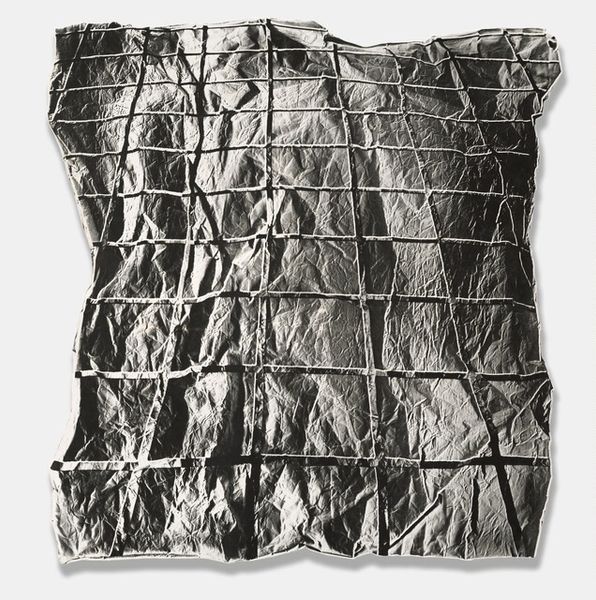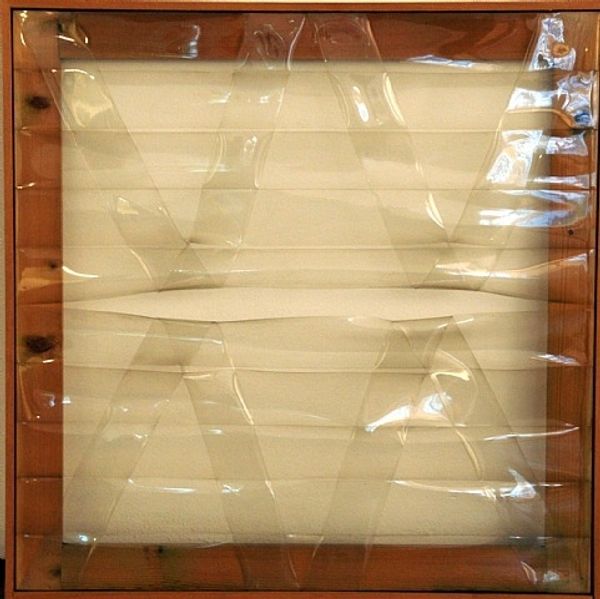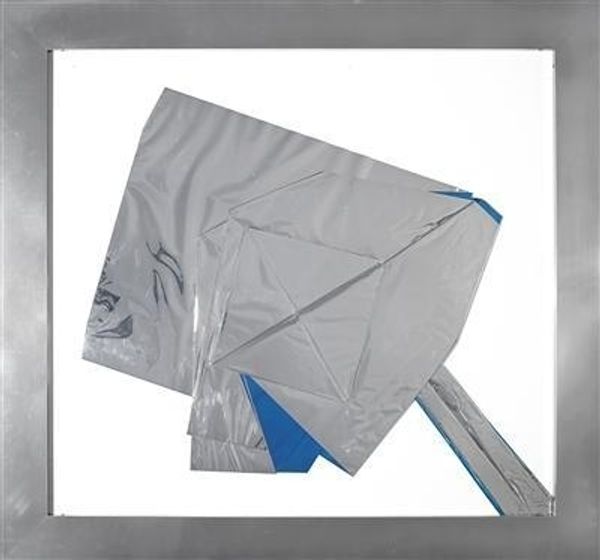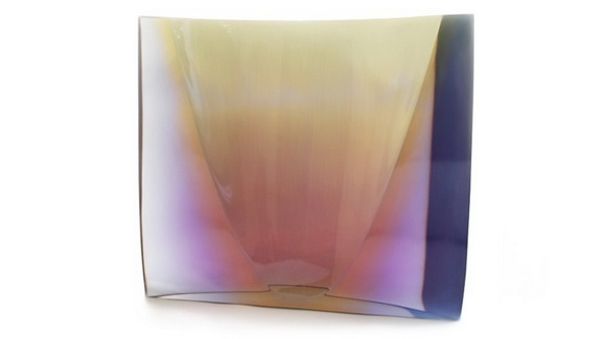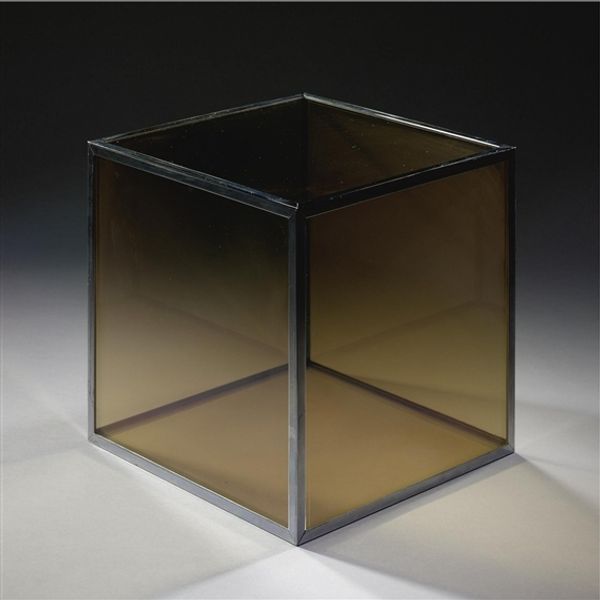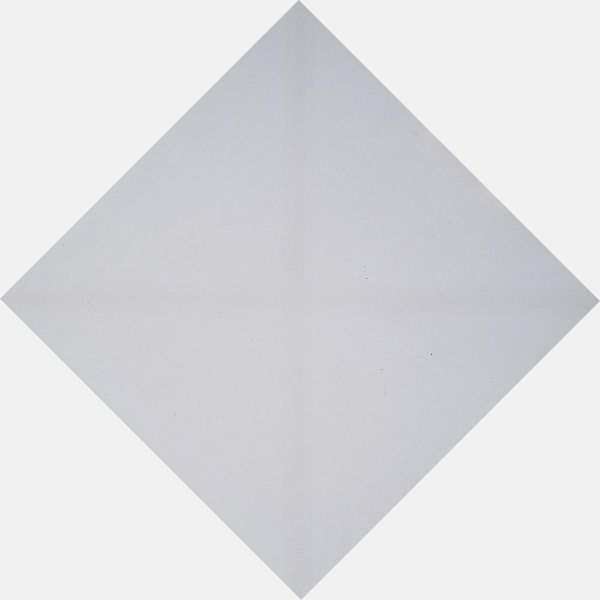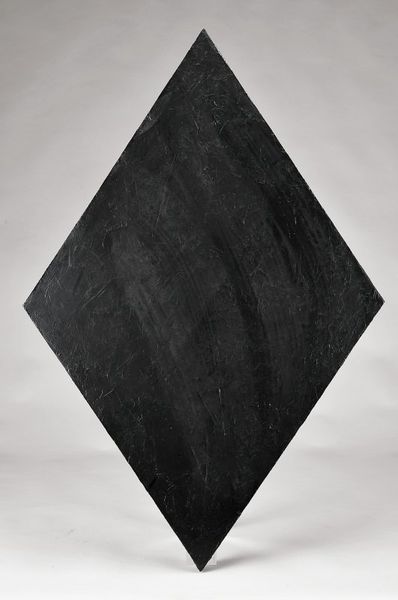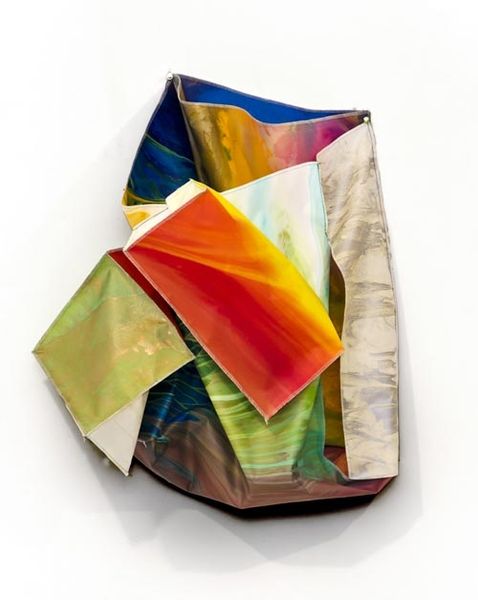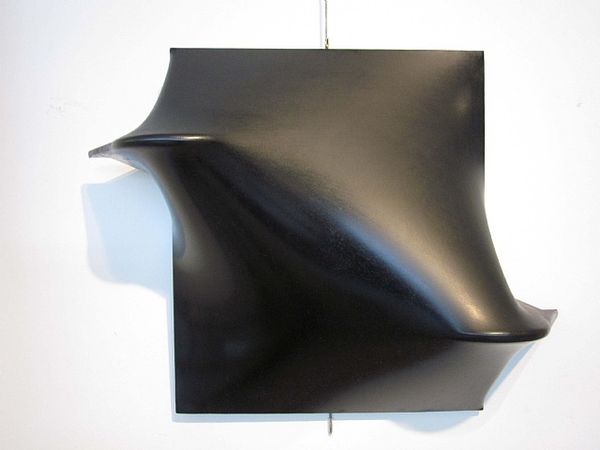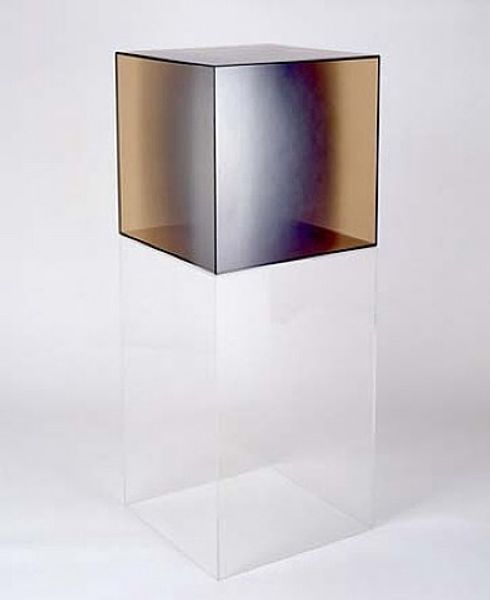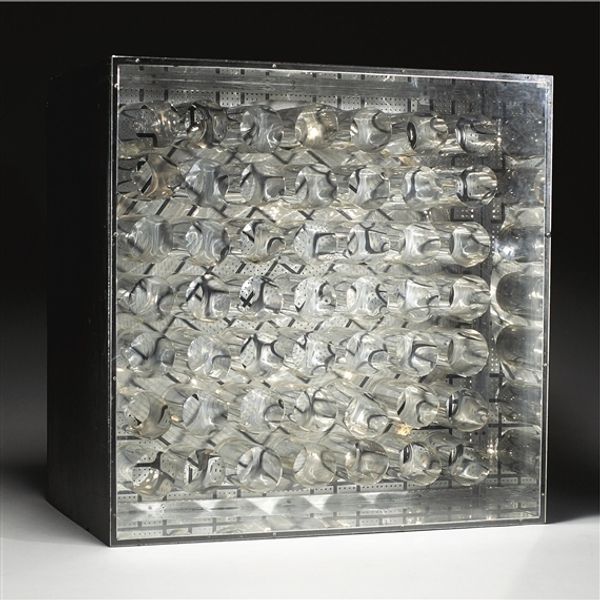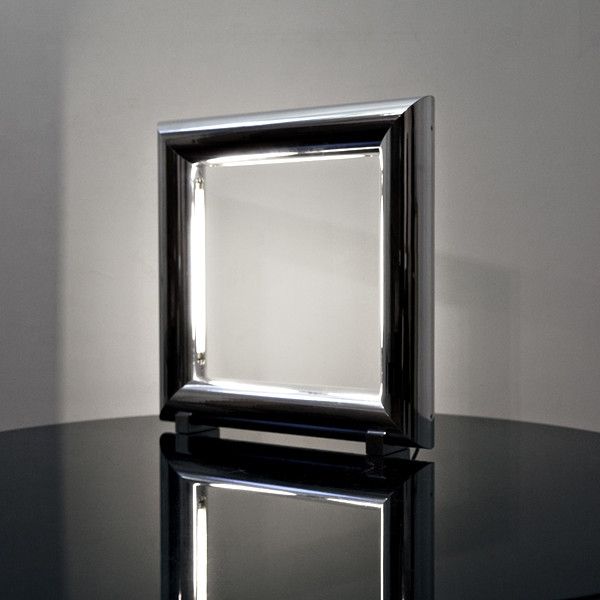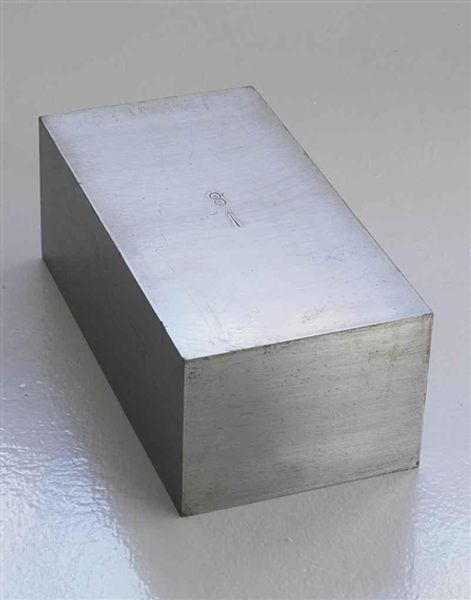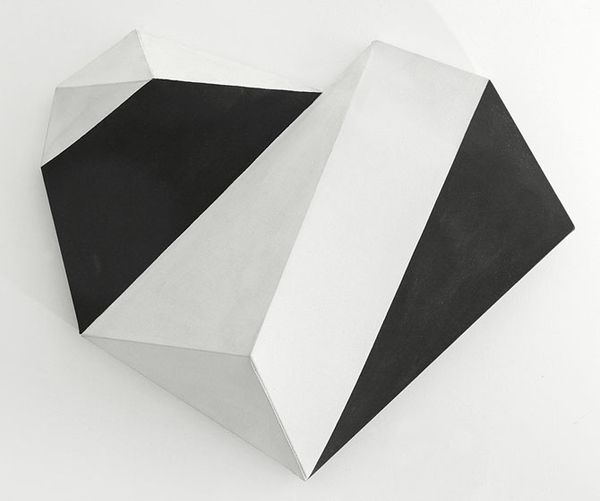
Copyright: Larry Bell,Fair Use
Editor: Here we have Larry Bell's "SMS 11," created in 1991. It's a mixed-media collage, and what strikes me first is how unconventional the materials seem. It's almost industrial in its coldness and abstraction. What can you tell me about how this piece functions within the broader art world? Curator: It's important to see Bell’s work within the context of postmodernism, specifically its rejection of high art versus low art distinctions. Consider how Bell is manipulating the very concept of the art object. Where does the ‘art’ reside? In the shiny mylar? The geometric overlay? Or is it in the tension created by their juxtaposition within the gallery space, forcing a re-evaluation of everyday materials. Do you think Bell is inviting the viewer to see the inherent beauty in the mundane, something often overlooked by institutions? Editor: I see what you mean. It’s almost a critique of the traditional, pristine gallery setting. By using materials that might be found discarded, he’s challenging the very notion of what deserves to be displayed. Do you think the "Pop-Art" style that has been assigned to this work serves this purpose? Curator: Precisely. "Pop-Art" used commercial, readily-available sources and processes, demystifying art. However, what's unique here is how Bell complicates this. He uses the familiar – packaging materials, geometric shapes – to create something ambiguous. In this sense, the “Pop-Art” label reflects a moment, as the work hints at, and actively resists simple commodification, blurring lines, just like our world continues to do today. How might the institutional setting further influence this interaction? Editor: It feels like its presence within this collection elevates these disregarded materials to an ironic, artful level. I never would have expected to have such complex feelings towards art utilizing industrial, everyday resources. Thanks for pointing that out. Curator: Absolutely, it goes to show you that art can function as both a mirror and a critical lens for society and our ways of making meaning. I wonder what people 30 years from now will read from this image of reflection.
Comments
No comments
Be the first to comment and join the conversation on the ultimate creative platform.
